Futon Daiko
Bold and beautiful! Futon Daiko is the highlight of fall festivals in Sakai
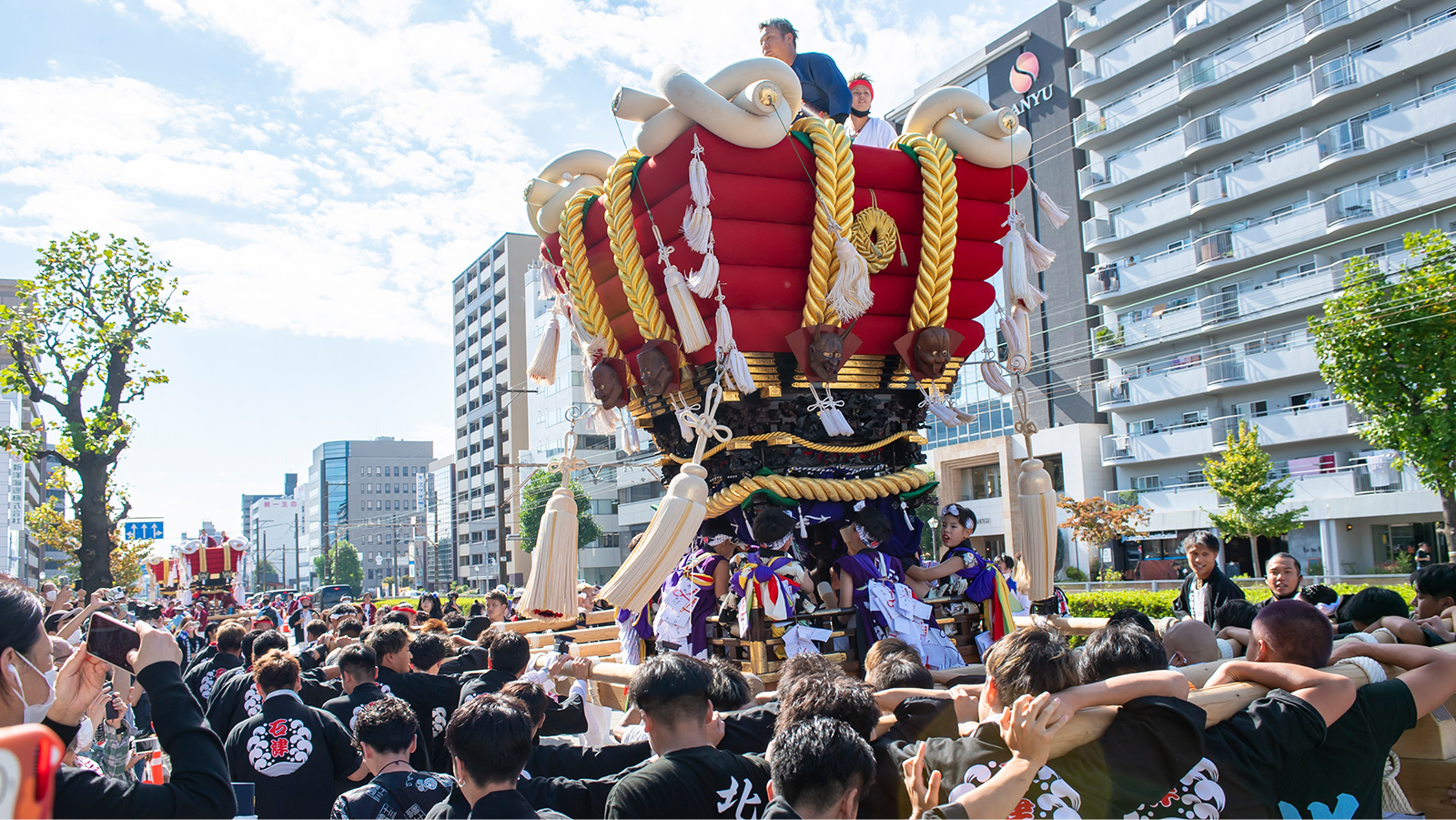
© 公益社団法人 堺観光コンベンション協会
Standing at a height of 4 meters, and a total weight of 2 tons. The festival floats known as “Futon Daiko” are quite distinctive. Futon Daiko refers to a large float consisting of a Japanese drum built onto a decorative base of five vermillion-colored “futon” cushions.
Vigorous shouts of “bera-bera-bera-sho-shoi” and the sound of the drums themselves ring out, while each Futon Daiko is carried by teams of 50-70 people. These are fall festivals in Sakai to offer gratitude to the gods for a bountiful harvest of crops and fish.
The history of Futon Daiko extends back hundreds of years
The most eye-catching element of the Futon Daiko is the massive pile of futons (Japanese bedding), placed atop them in something of a reverse pyramid.
The beginning of this tradition is said to lie during the Edo period (1603–1867). The cotton-filled futon was a rarity for the common folk, and so the parishioners would bring futons for the god to sleep on in the waypoints when carrying a palanquin between shrines. One theory states that the seating cushions on the drums are a place where the god sits; another that the Futon Daiko are a form of float, like the Danjiri, and purify the streets that the god will pass along.
While they are called “Futon Daiko” in Sakai, they have different names depending on the region, including being called “Yatai” in Hyogo Prefecture, “Danjiri” in Awaji City, and “Kokkodesho” in Nagasaki Prefecture.
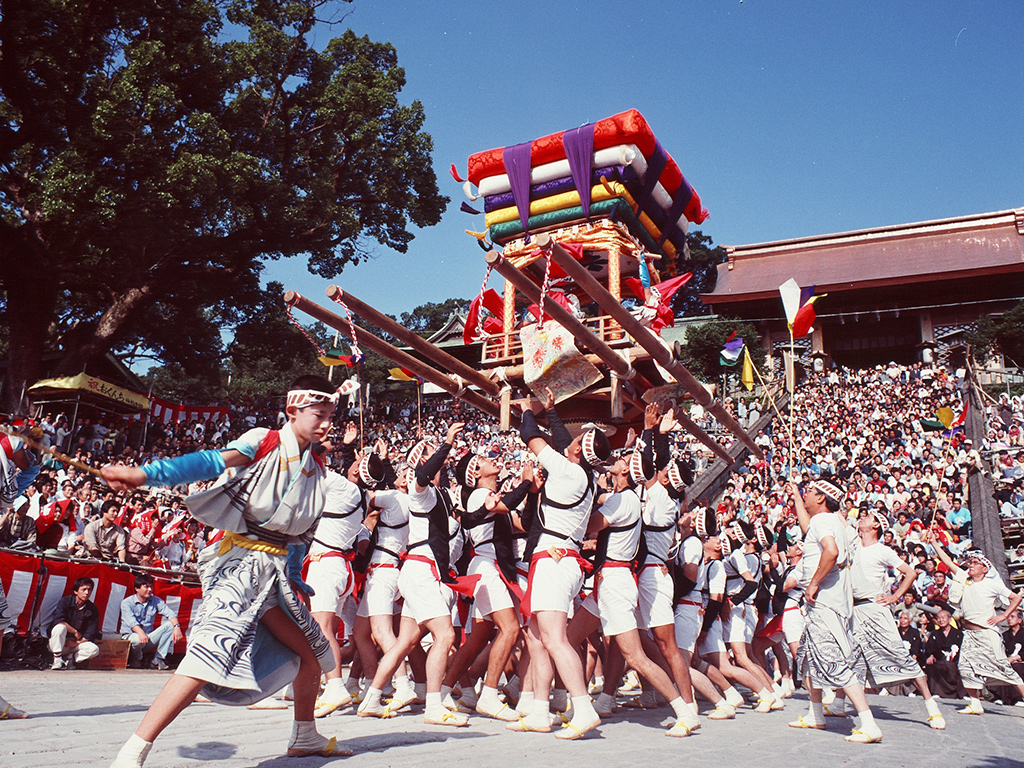
“Nagasaki Prefecture, Kokkodesho” © NPTA
When unpicking the history of Futon Daiko in Sakai, an “Ema” (wooden plates that people write their wishes on) circa 1830 at Mimura-gu, what is now Aguchi-jinja, shows palanquins, floats, and also drums. The beginning of the “Kokkodesho” in Nagasaki Prefecture was the dedication at Suwa-jinja in Kabashima-cho, Nagasaki in 1799, and that is also said to have originated in Sakai. Behind this lies the background of trade and the flow of other goods between Nagasaki and Sakai which suggests there were Futon Daiko in Sakai during the late 18th century.
This leads to the assumption that the origins of Futon Daiko lie in Sakai during the Edo period (1603–1867).
A shift from Danjiri floats. The prewar flourishing of Futon Daiko
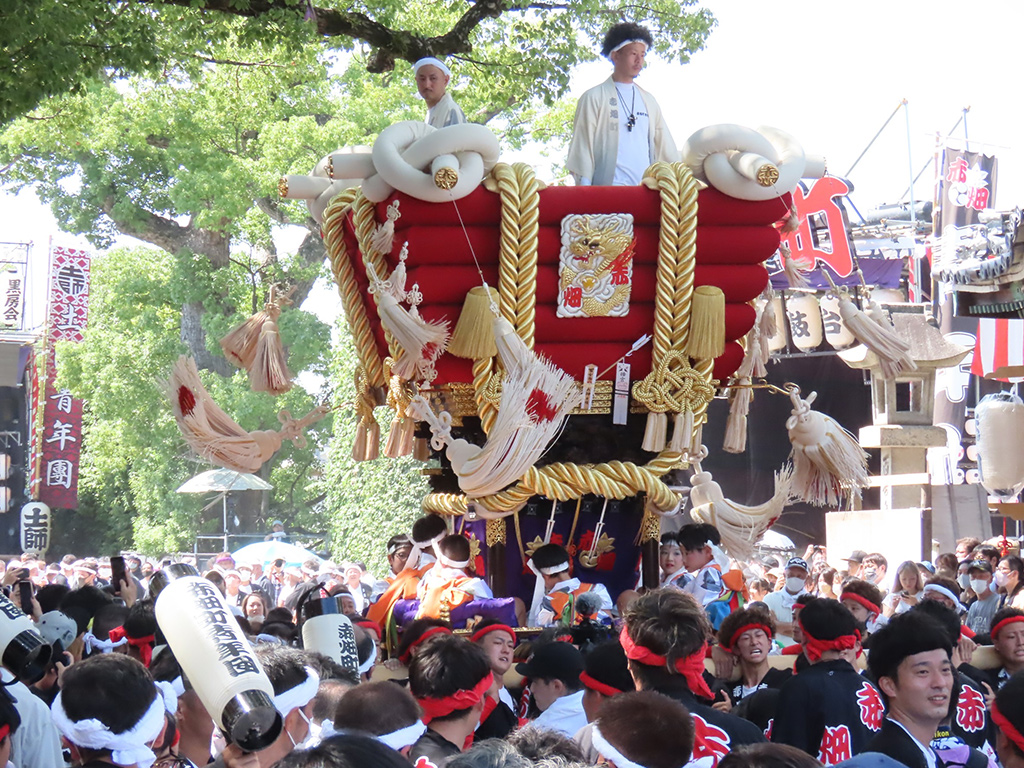
© 百舌鳥八幡宮秋祭運営協議会
Up until the middle of the Meiji period (late 19th century), festivals in Sakai were centered on Danjiri and floats. However, in the year 1896 there was an accident that came to be known as the Sakai Danjiri Disaster, and as a result, parading of Danjiri was prohibited. After that, the use of Futon Daiko was permitted for dedications to celebrate victory in the Russo-Japanese War (1904-5). This caused the old sections of the city that had dismantled or sold off their Danjiri to switch over to Futon Daiko.
In the prewar period, Futon Daiko were owned by groups called “Ko,” which were gatherings of professionals such as fishermen, carpenters, and blacksmiths. Among them, Sugawara-jinja on the north side of Oshoji Street, which bisects the old city from north to south, and Aguchi-jinja on the south side both received many dedications from various Ko as the guardian of their respective areas, and on a scale larger than the regular festivals. That energy remains to this day, with many people attending the Hassaku Festival at Aguchi-jinja to see the Futon Daiko for themselves.
Furthermore, during the Mozu Hachimangu Tsukimi Festival, 9 towns dedicate 2 Futon Daiko each, a large and a small, to pray for a bountiful harvest. This is one of the largest and most popular fall festivals in the Senshu area, bringing together as it does a total of 18 Futon Daiko.
Interview
Futon Daiko connect people with other people, the region with the shrines
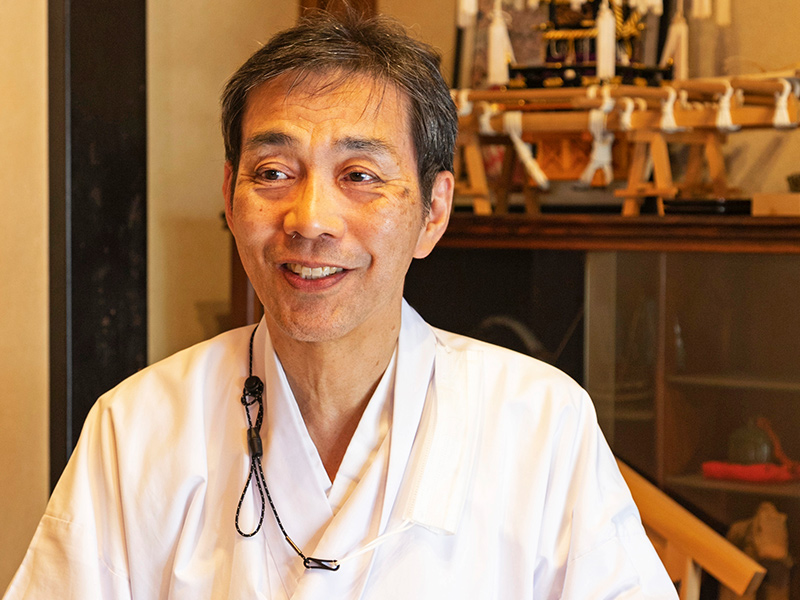
© Takanori Umino
Mozu Hachimangu Chief Priest
Toshio Kudo
At Mozu Hachimangu, we hold the Tsukimi (moon-viewing) Festival on August 15 of the lunar calendar, falling on the harvest moon in mid-autumn. The dedication of Futon Daiko takes place on the weekend around that date.
Regarding the Futon Daiko in this region, it is said that in the past, each household would invite so many guests to come and see them that the women of the house would be too busy with housework to see “Miyairi “and “Miyade” (entering or leaving of the Futon Daiko). Such tales from long ago show how keen everyone has always been to show off these treasures of their town.
Also, when I was a child, these festivals didn’t operate in such an organized fashion. Some of the bearers would get worn out along the way, or even just give up completely and leave. We would plan to return to town by 11 at night and return close to the next morning. It’s funny to look back on these things now. What great memories!
There are two types of shrine festivals. These are the “Shinji” (Shinto rituals) performed by priests like me, and then “Kaminigiwai” performed by our parishioners. The second type is intended for everyone to come together and please the gods, and they help to form connections between people and other people, the region with the shrines. One of the highlights of the dedication at Mozu Hachimangu is seeing the large team of bearers boldly carrying the Futon Daiko up the shrine steps. You can’t see Futon Daiko in a great many places, and I hope they will remain a wonderful part of the “Kaminigiwai” in our region.
Also, look closely at the carvings and decorations of the Futon Daiko
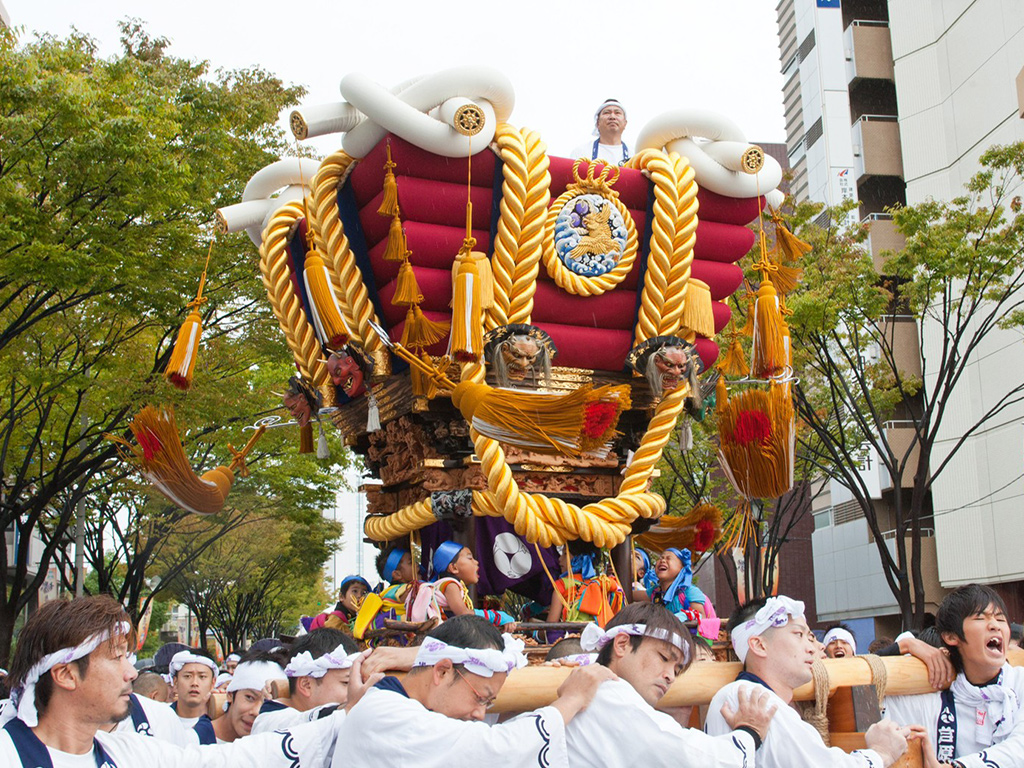
© 堺まつりふとん太鼓連合保存会
Futon Daiko has numerous different names depending on region and is also classified into various shapes and styles. These include Osaka, Sakai, Awaji, and Kaizuka types.
All of the Futon Daiko in Sakai are not necessarily the Sakai type, but the Sakai type is characterized by having a “Koyane” (small roof) beneath the futon. This is said to be a remnant from when the first Futon Daiko were made from repurposed Danjiri. Another striking feature is how the futon gets thicker as they move up the pile.
Futon Daiko also has a variety of elaborate decorative touches, including carvings around the seat section and 4 ”Ofusa” (big tassel). These decorations differ depending on the town. There are many fabulous examples, including “Futonjime” (gold embroidery decoration) or distinctive, decorative blue “Musubi” (knots decoration).
The incredible sight of Futon Daiko being carried along!
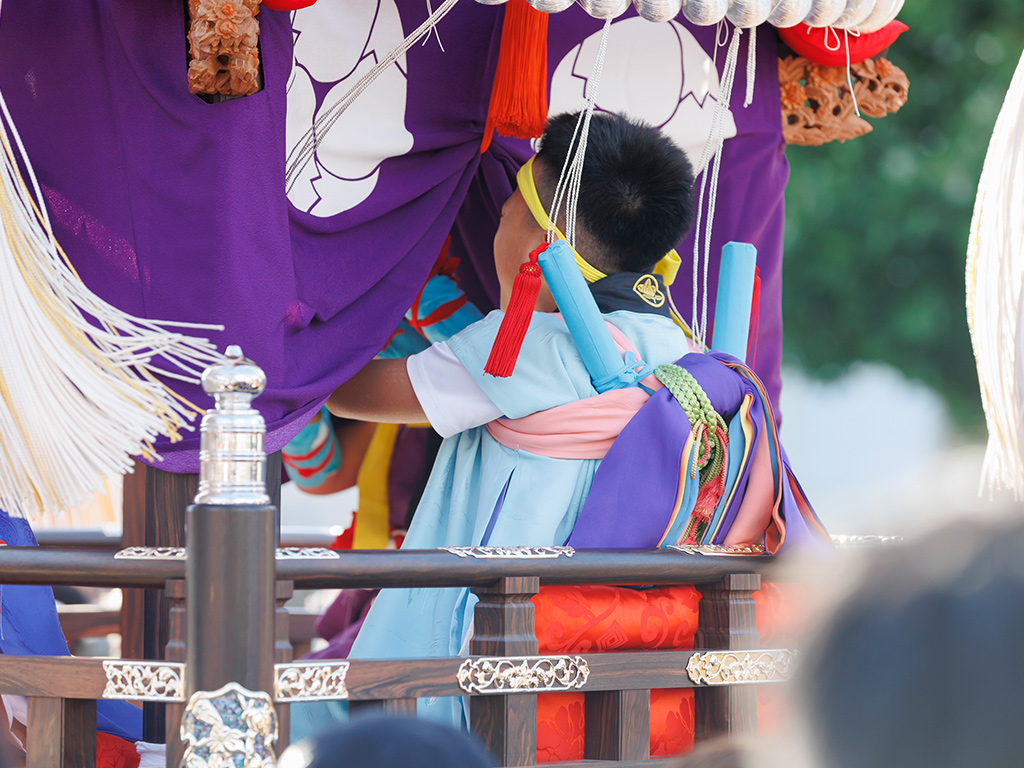
© 公益社団法人 堺観光コンベンション協会
But the main highly of Futon Daiko is seeing them being carried through the streets. A large team of bearers all come together, bringing their strength—and shoulders—to bear the drum in bold and beautiful style. The passion and dedication this takes truly epitomize how everyone involved feels about Futon Daiko.
The bearers are accompanied by the sound of the Futon Daiko and “Hayashiuta” (a rhythm song). Children ride the drum in ceremonial dress, beating the drum and singing cheerfully.
Fall moon on mountain stone, clouds cover the moon, flowers in the wind
The wind carries away to the island of Awa
Five ryo and ten ryo in a striped purse
What’s that rumble? What’s that rumbling?
Earthquakes, thunder, and evening showers
Bera, bera, bera-sho-shoi
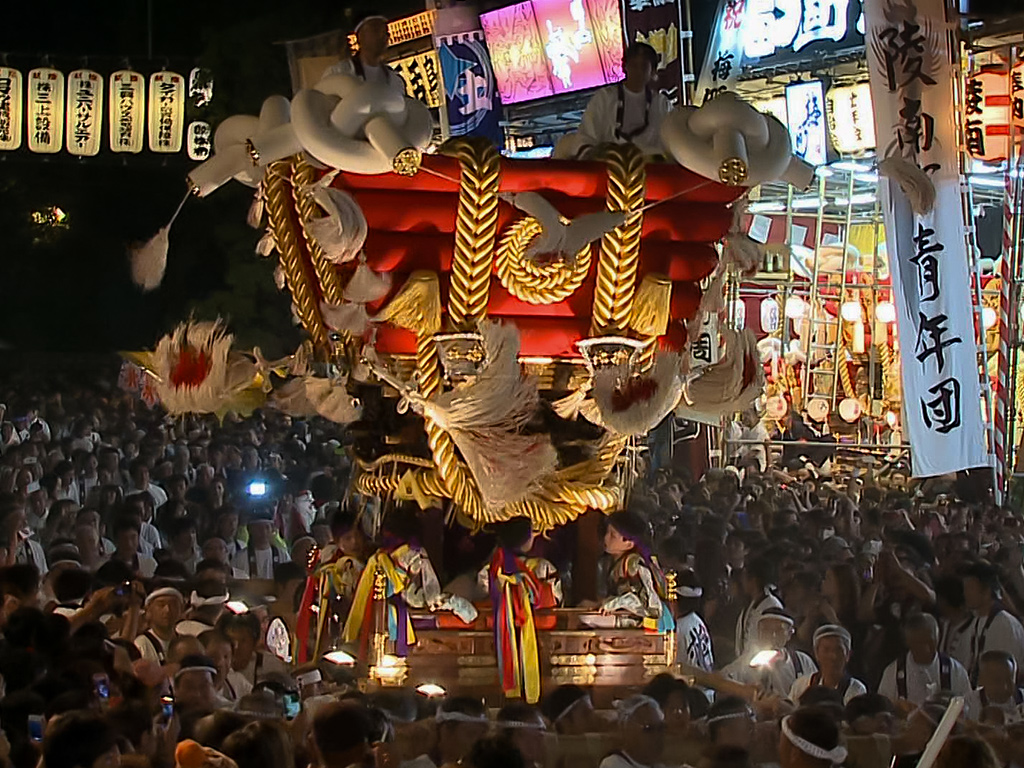
© 公益社団法人 堺観光コンベンション協会
All towns sing the “Fall Moon” section, but other lyrics might be changed, such as inserting the name of the singer’s town. The “Bera” part is a rallying call to wish for a good harvest, which derives from “Bera (good harvest of rice)”.
The absolute highlight of the Futon Daiko is when they arrive at the shrine itself (“Miyairi”). They only reach this point by changing bearers multiple times. The final team then gathers the last of their strength to synchronise their breathing and perform “Iyase” by hoisting the Futon Daiko high into the air by extending their arms upward. At the shrines where different bearers’ teams by each parishioner are gathered, the bearers show militancy and try to put on a good show and impress the crowd.
Interview
The key is the unity of the bearers. Futon Daiko is like a living creature.
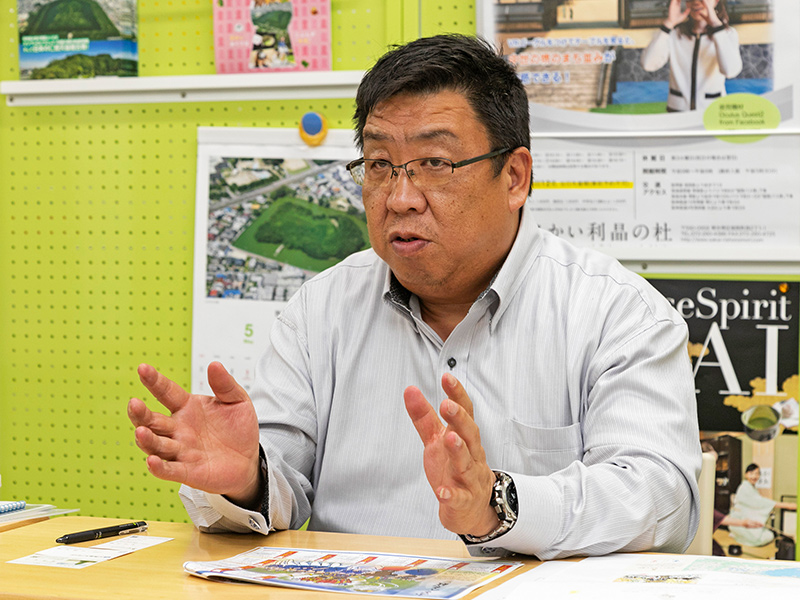
© Takanori Umino
Sakai Festival Futon Daiko Alliance Conservation Council, Public Relations
Hiroshi Yoshida
To all breathe together, step together, and share the same, single feeling.
When that moment comes, it’s strange how light the Futon Daiko feels to lift. Meanwhile, if the same team is out of sync, out of step, it becomes that much harder to lift it. I have been a bearer of Futon Daiko for many years, and I often feel like the Futon Daiko itself is a living creature.
The expression “shoulder” is used in terms of carrying, but actually, the part directly behind one’s neck is also very important. The technique used by bearers involves supporting the weight in a straight line with the core of their body. Simply physical stature and strength aren’t enough to carry a Futon Daiko. A veteran develops this tell-tale lump on their neck, meaning you can see at a glance who the Futon Daiko bearers are—if you know what to look for!
If you have a chance to see Futon Daiko during a festival, try to take note of the unity displayed by the bearers. The team comes together, encouraging each other and working as one to achieve something none of us could ever manage alone. I want as many people as possible to experience the passion this creates, and the rush when you see a team become a single, cohesive unit.
Parishioners compete with each other! The Sakai Festival shows another brave figure different from other fall festivals
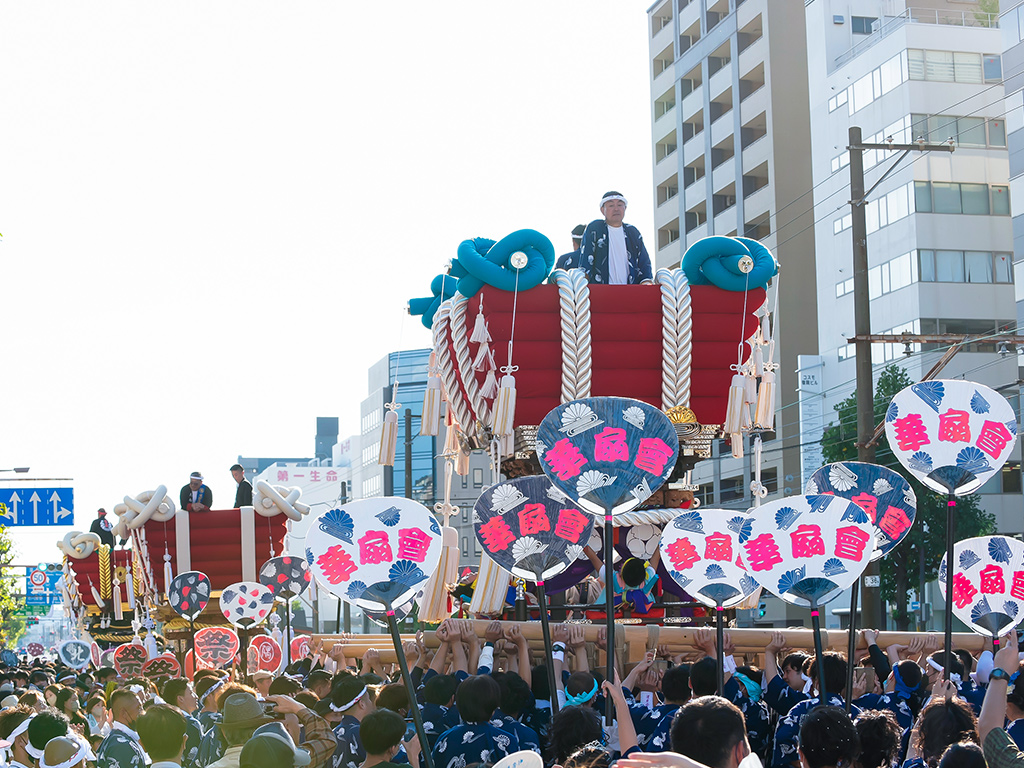
© 公益社団法人 堺観光コンベンション協会
The Hassaku Festival at Aguchi-jinja near the start of September has been held for over 600 years. Involving four different Futon Daiko arriving to be dedicated at the shrine, it still attracts massive crowds of people. The Hassaku Festival is also not only the start of Futon Daiko in Sakai but also the precursor to fall festivals in the Senshu region.
Once the fall festivals are completed in every shrine, the Sakai Festival is then held, which seeks to widely spread the 1600-year history and culture of Sakai. It started in 1974, with Sakai Futon Daiko taking part in the very first event.
Festivals are normally held within a single parish, making it hard for them all to come together in such a fashion, but the Sakai Futon Daiko parishes have formed the Sakai Festival Futon Daiko Alliance Conservation Council. Such a gathering of multiple parishes is rare anywhere in Japan and is what allows a variety of different Futon Daiko to take part in the Sakai Festival.
While during the fall festivals, the drums are dedicated one at a time, during the Sakai Festival multiple drums are all on the move at the same time, allowing for parishes that don’t normally compete to be seen on the streets together. One of the most appealing aspects of the Sakai Festival is being able to enjoy this collaboration between Futon Daiko.
Interview
A festival intended to pass down culture with the involvement of three generations
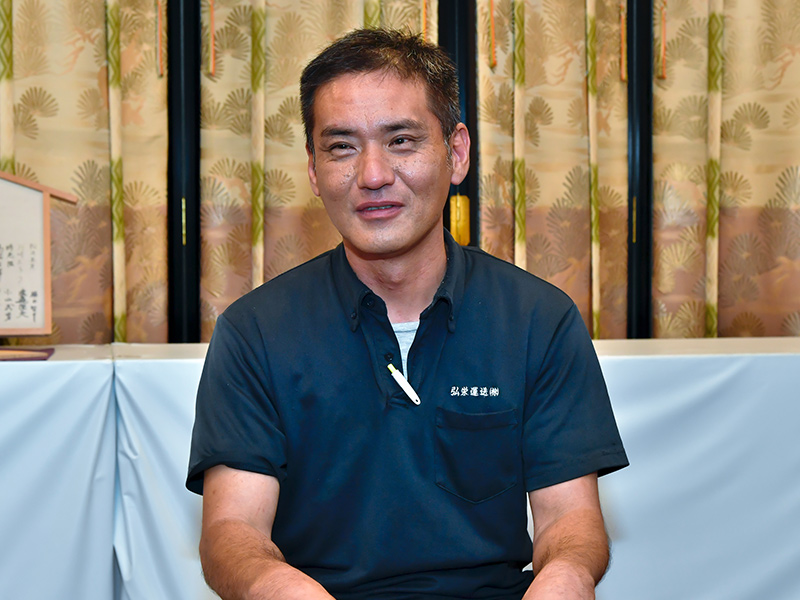
© Minoru Matsuura
Shinzaike Hama Futon Daiko Union
Daisuke Fujiwara
Futon Daiko involves people of all ages. There are the children who beat the drums right through to their grandfathers, all getting involved. Providing a place for all of these people to come together and combine their strengths for a common cause is very important in our modern times. We hope that three generations will continue to gather in this way, as the epitome of a festival that transmits culture from parents and grandparents down to their children.
Furthermore, Sakai has a history of some parishes changing from Danjiri to Futon Daiko, making it one of the rare cities in Japan that have both. While Danjiri crosses large distances quickly, the Futon Daiko short distances more slowly, it is pretty difficult to get them both to meet at the same time and place, but Futon Daiko tend to be held from September to mid-October, while October sees the Danjiri taking place. There’s always a festival somewhere in the city during these two months, and I want as many people to come and see them as possible! The more spectators we have, the more motivated we are to perform well!
Interview
These beautiful traditional events are vital for imparting Japanese culture
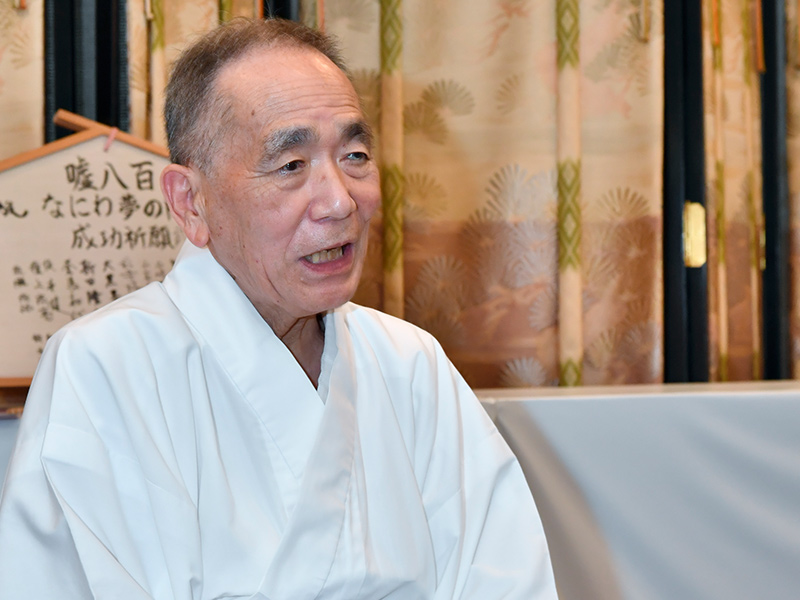
© Minoru Matsuura
Aguchi-jinja, Chief Priest
Naoyoshi Mikami
Before the war, 12 Futon Daiko had been dedicated, but most of them were lost as a result of the damage caused by the war. Thankfully, we still have four that are dedicated at the shrine, and they continue to bring in throngs of people. Furthermore, materials from the past suggest that various reasons also threatened to bring the Futon Daiko to an end, but our parishioners have overcome such obstacles together. We live in a time when our connection with traditions is fading, along with our awareness of the original reasons for these festivals, but I still hope that Futon Daiko will continue to pass down the Japanese spirit to future generations.
As I am on the side that receives the dedication, I have no experience carrying a Futon Daiko myself. But every year I never fail to be moved when I see the drum coming in through the Torii gate, and happy that they have reached us again safely. When the sound of the drum, the swaying of the tassels, and the movement of the team all become one, it truly is a remarkable sight. I want these beautiful Sakai Futon Daiko to continue forever.
By Tomohiro Kondo.
Photographs by
Minoru Matsuura, Takanori Umino